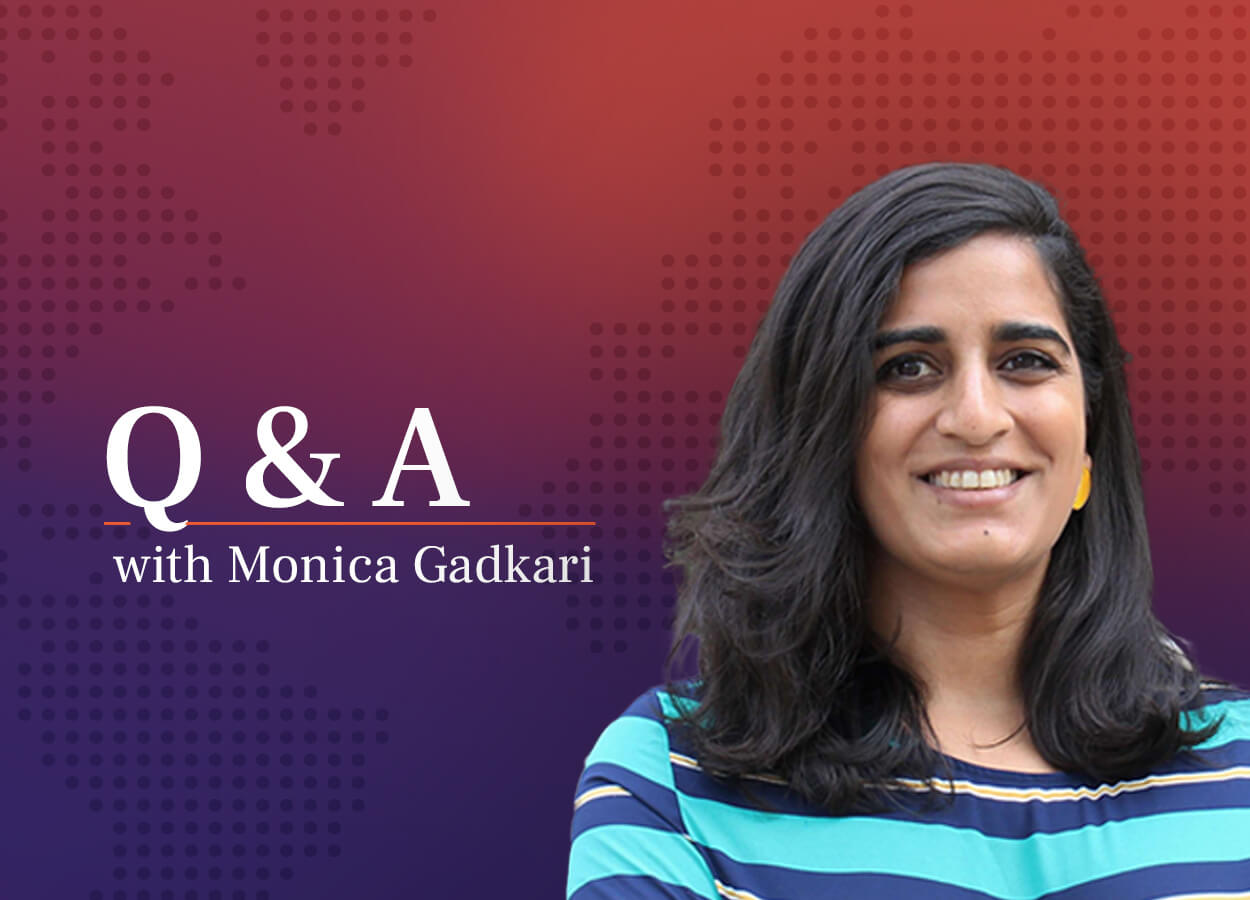You have to know what works to make smart decisions—especially in fields as complex as international development. Until recently, however, few development projects relied on data to assess results and drive decisions, and they didn't systematically seek input from those most affected by the problems they sought to solve. After a project concluded, it was often impossible to tell whether it had been effective.
Eventually, international development agencies started to adopt systems to track program monitoring, evaluation, and learning—also known as MEL—and report on progress toward development agendas. Now, donors are embracing MEL's power to drive strategic, real-time decision-making that can dramatically increase program effectiveness and, by extension, development impact.
Q&A with Monica Gadkari, Resonance Director of Monitoring, Evaluation, and Learning
We sat down with Monica Gadkari and asked her to share her thoughts on MEL's increasingly important role in development programming.
As we enter 2021, the world faces a range of competing crises. In this climate, why does MEL matter?
MEL tells you if what you plan to do is working in the way it's supposed to. Every sector needs it, and it matters in every climate. Development practitioners want to do good things and often have great ideas on how to effect change; the point of MEL is to make sure that our intentions are realized.
Creating a MEL framework allows us to lay out our intentions, track them, and make sure they're working. With challenges as complicated as climate change, world hunger, global health—and so many others—it's crucial to learn from our past mistakes if we're going to become more effective in solving them.
Not only that, MEL requires us to prove our effectiveness to beneficiaries and donors. A lot of development has been done by very idealistic people with great ideas. But a great idea may or may not work.
People get wedded to their ideas and assume that they are working. MEL asks: why is something good? It helps us define the ultimate goal and then track progress toward it. It requires us to have conversations that shift the way we think, and the way things are designed.
How do you anticipate the field of MEL changing over the next several years? Or perhaps as a result of the coronavirus pandemic?
A lot of donors understand that MEL isn't just about reporting anymore; it's about understanding how a program is performing and using that information to enhance that program's effectiveness over time. The field is much more focused on learning and continuous improvement now.
In the coming years, I think practitioners will use more qualitative data to inform learning and drive decisions. Quantitative data and randomized trials are great, but it's just as important to make sure you get the right voices at the table and collaborate.
People are starting to recognize that MEL isn't just about really good numbers, but about talking to the right people to get you what you need—especially local stakeholders and informants on the ground.
Many people wonder how COVID will influence MEL. The short answer is: it depends. Change only happens when we take time to learn. COVID is changing the way development is happening right now. We are implementing many activities remotely. We are relying less on international travel and more on guided local partnerships, and we are expanding our use of remote technology.
The MEL we do right now is essential as we systematically reflect on these changes. It can help us understand the best way to keep some of the good parts of those changes.
What are the essential elements of a well-designed MEL program?
Make sure that your theory of change is clear and explicit. Then map out your pathway to success:
- What are the immediate steps?
- What are you planning to do, and how will you make sure you're actually doing it?
- What are the changes you expect to see in the short term? The long term?
Mapping this helps you track your pathway to success. If you get off track, MEL is how you see that and find your way back.
Also, create a plan for data collection at the very beginning. A plan saves time and money and helps ensure that program staff can integrate data collection into everyday processes. Consider your use cases. If you aren't planning to use the data, don't collect it. Think about how you'll use it, and when—during a work planning process or annual reviews? Monthly?
Finally, decision-makers need to be okay with the fact that the original plan isn't always the best one. When implemented correctly, MEL enforces accountability and improves programs so that we're not wed to ideas but results. People have to be open to giving up ideas or changing the approach if it isn't generating results. Look at businesses: they adapt and shift as results come in. Development hasn't traditionally done that.
You are Resonance's first Director of MEL. Why did you choose to join Resonance?
My favorite way to implement MEL is to work with organizations to create a long-term learning partnership. It's amazing to see the kinds of changes this can produce in programs and at a policy level. Resonance has demonstrated a commitment to innovation and long-term learning partnerships that aren't just about auditing but about making programs more effective over time.
Some of our notable MEL projects include our work in Eastern Ukraine and our operational excellence and counterterrorism activities for USAID and the U.S. Department of State. I look forward to working with our team to develop more of these lasting, mission-wide partnerships in the coming years.



